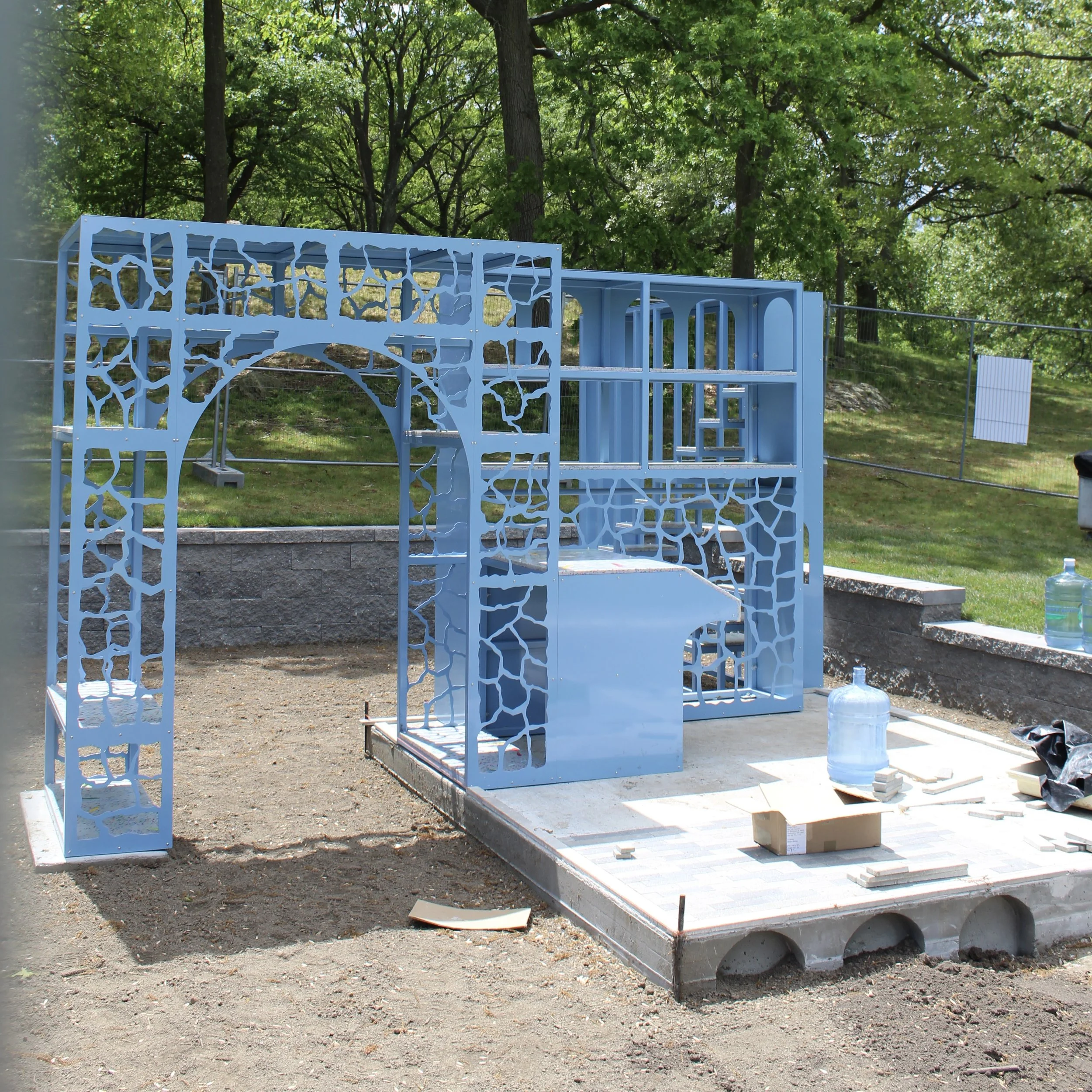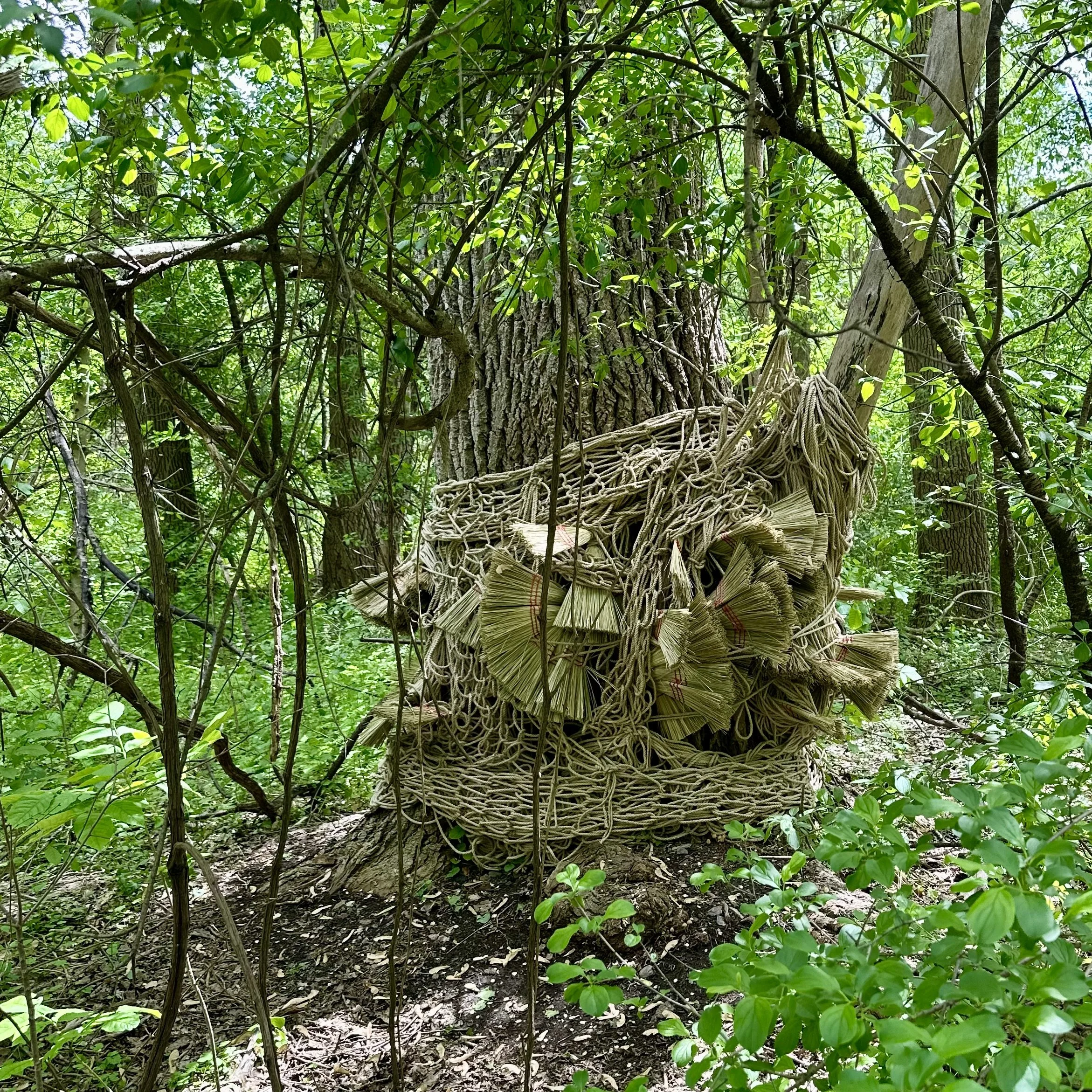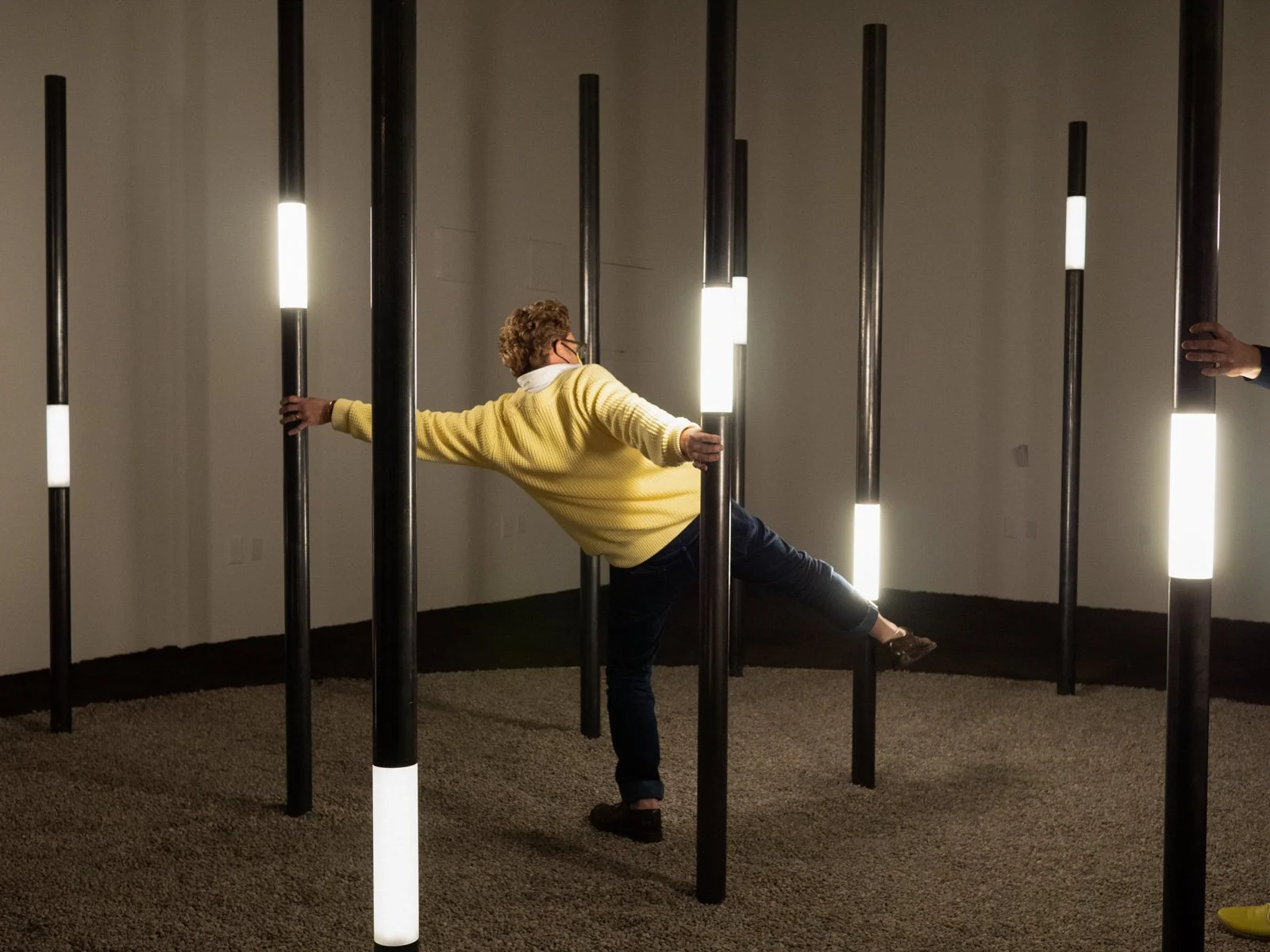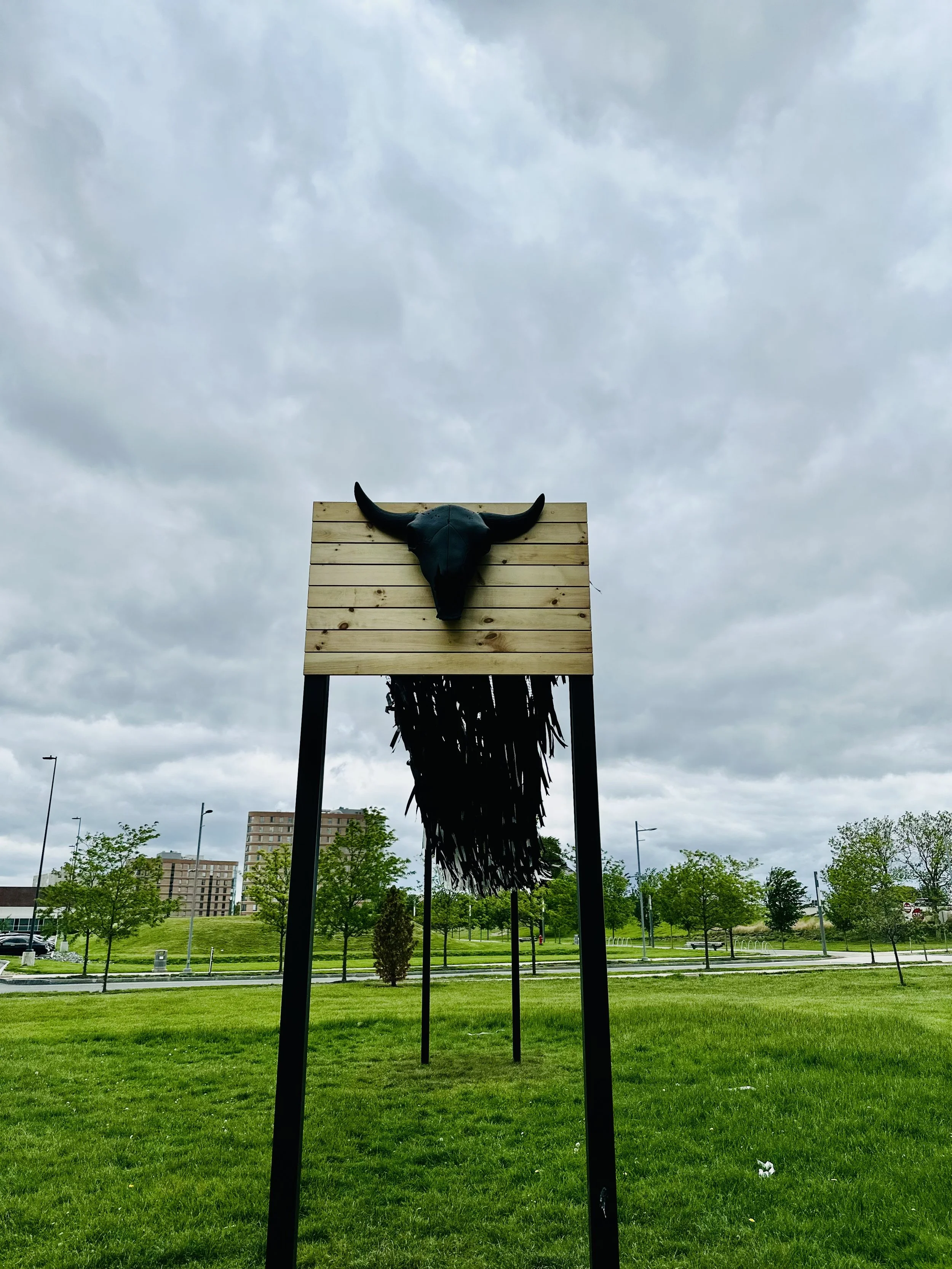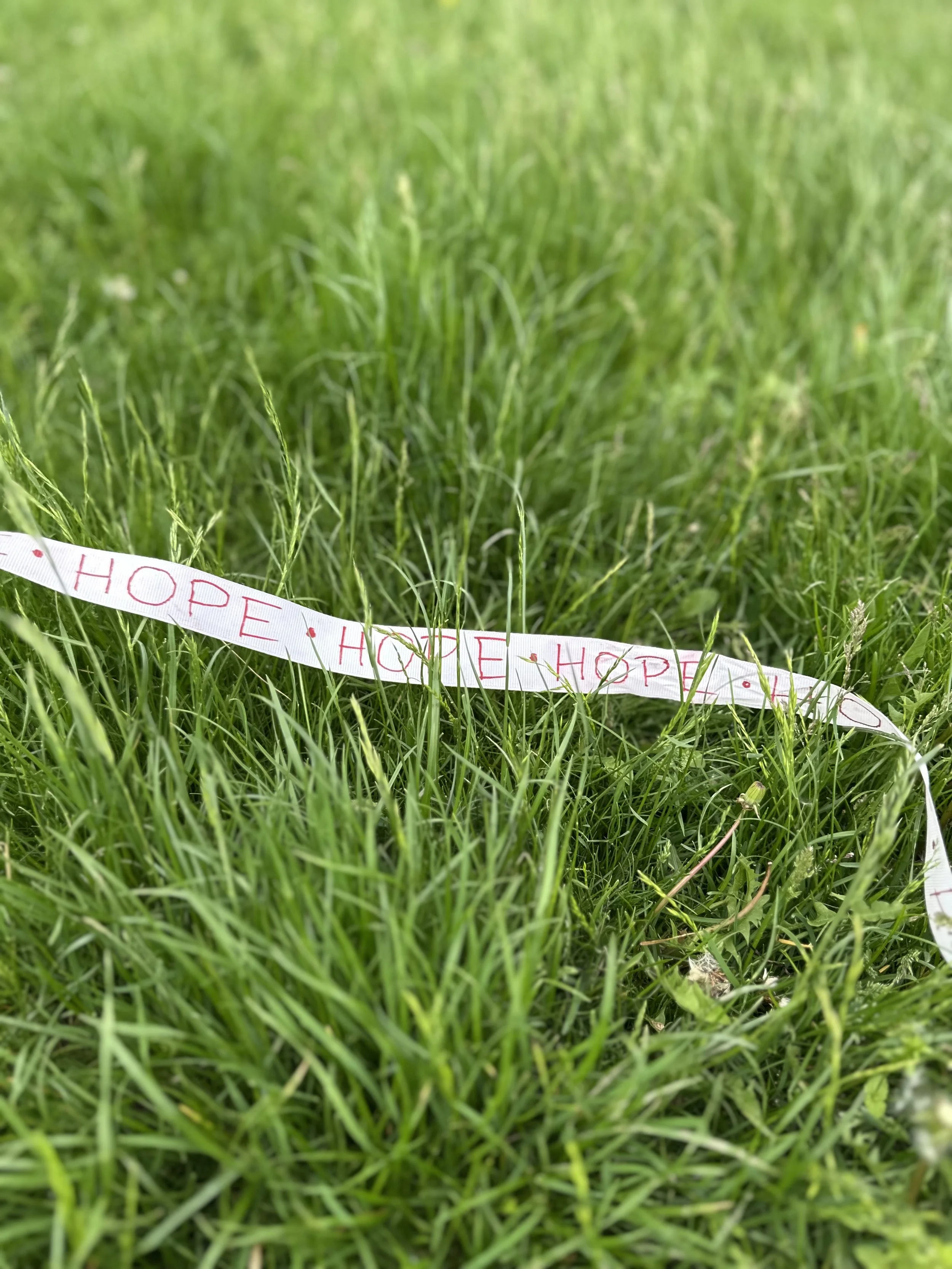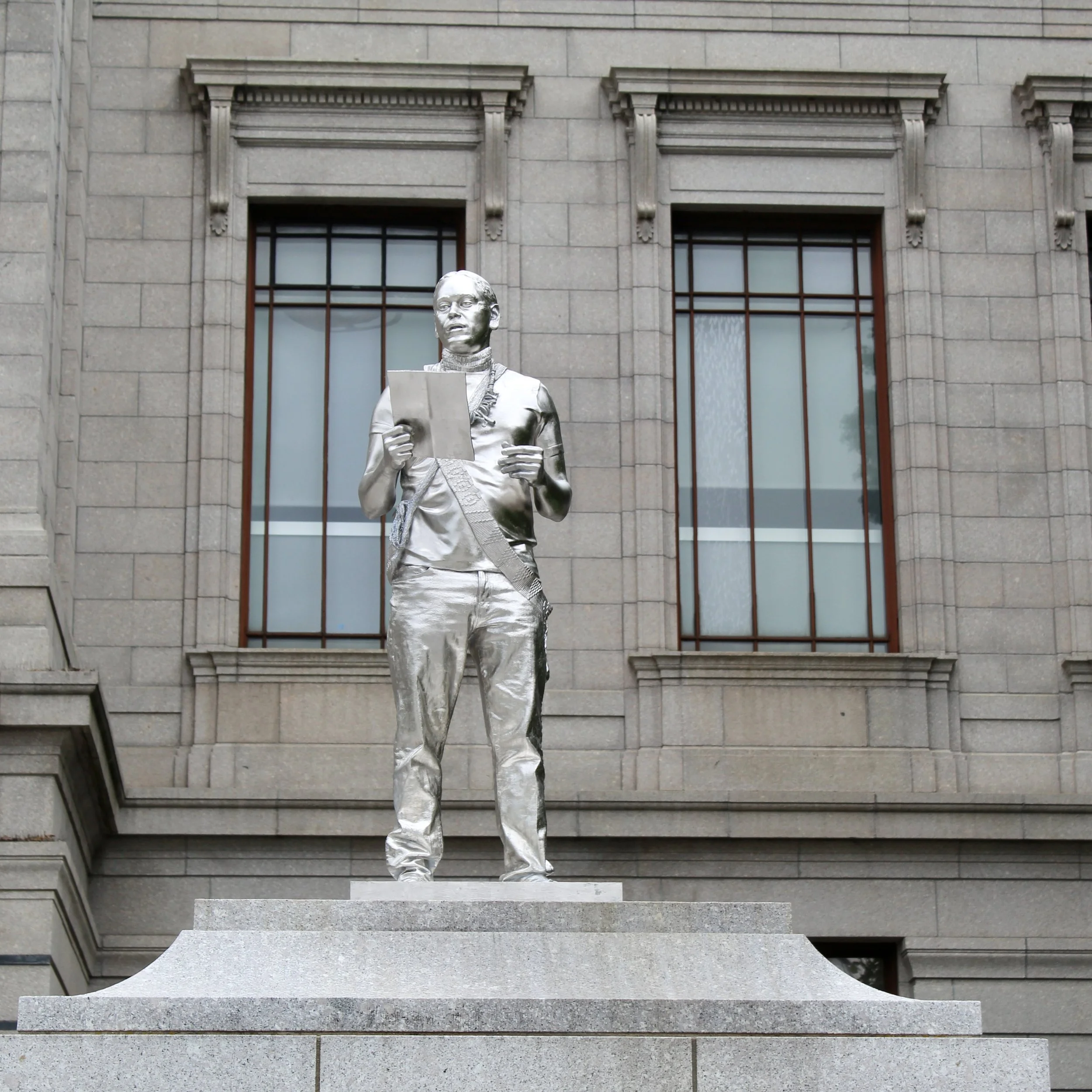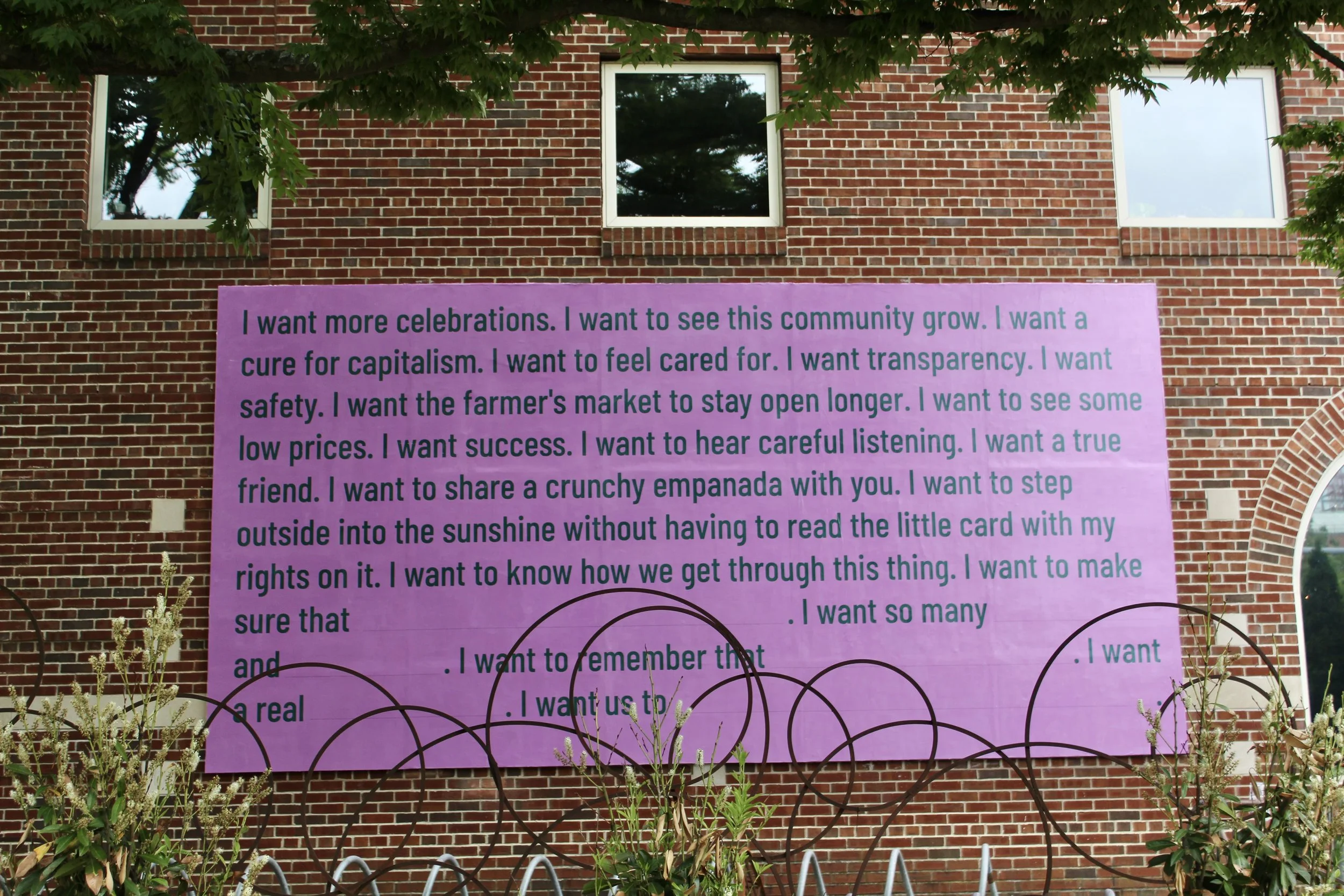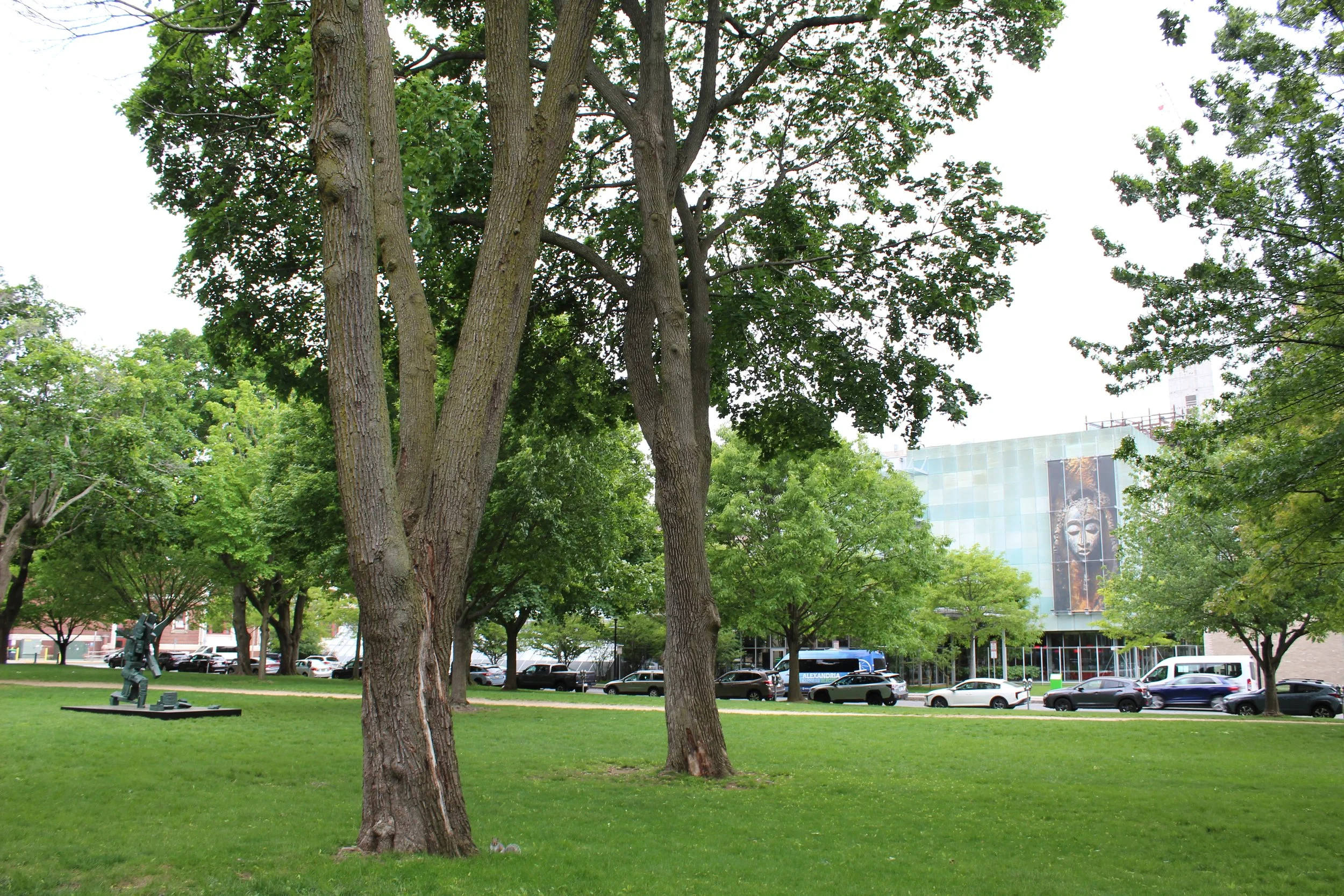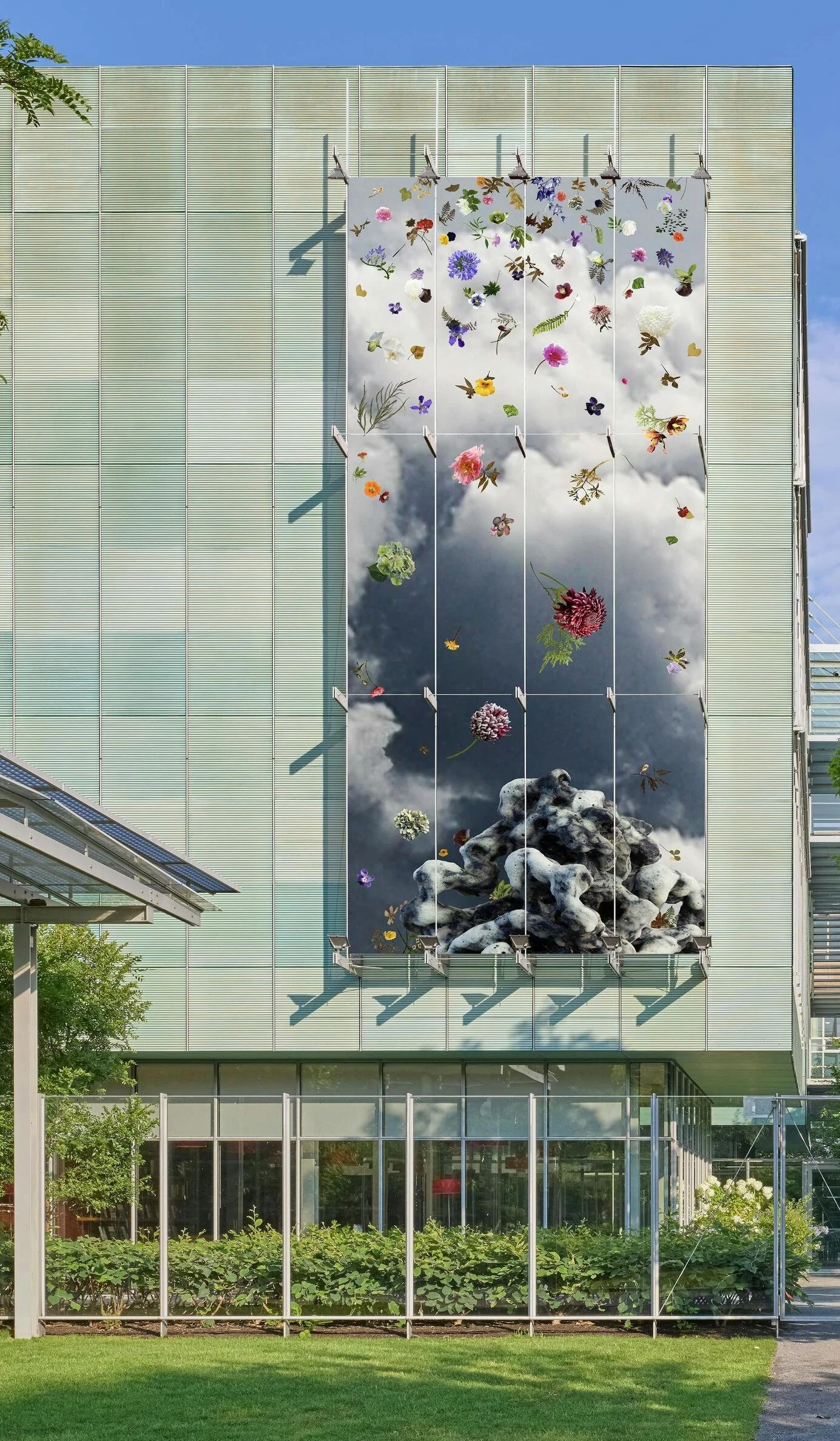How to Triennial: Mattapan, Dorchester and Fenway Sites
The inaugural edition of The Boston Public Art Triennial launches tomorrow and runs through October 31, 2025. If you have no idea what I’m talking about, you must have missed the bus signs, the colossal banner hanging in the Pru and the many press announcements. This is Boston’s contemporary public art coming out—it happens only once every three years and you don’t want to miss it.
Entitled The Exchange and curated by Pedro Alonzo and Tess Lukey, this first iteration of the Triennial celebrates public art’s power to unite, inspire and elevate a city across neighborhood, experience and worldview. Alonzo and Lukey have assembled a cast of 23 world class artists representing an enormous variety of purpose, process and place. Bringing art to all neighborhoods is a Triennial priority—the artwork is installed in Back Bay, Cambridge, Charlestown, Dorchester, Downtown, East Boston, Fenway/Kenmore, Mattapan and Roxbury.
Triennial map, as found on their website.
Click here for the Triennial map.
In 2015, when she founded the Triennial’s precursor Now + There, Executive Director Kate Gilbert had a vision. She wanted to make Boston a world class public art city. She knew that wherever great art is free to all, curiosity, acceptance and pride follow. After years of collaboration with city officials, artists, supporters and community organizers, that vision has come to life to benefit Boston and the world. And now lucky us, we get to enjoy it.
But 23 artists in 20 locations is a lot. All the excitement about the Triennial has been accompanied by questions about how to do it all. How does one see all the art? Is it appropriate for kids? Dogs? What about date night? Where to park or, if I don’t have a car, how to get around?
Misstropolis is here to help you figure out How to Triennial. We’ll be publishing different routes over the course of the following weeks. Now, all you have to do is choose a route and enjoy. Don’t attempt to see everything in one day. You have time. Plan to linger, explore, and to see the work more than once. One of the best things about the Boston Public Art Triennial is its expansive neighborhood design. You will visit places you might not have otherwise, and fall in love with Boston again and again.
A southern loop, great for a day with the kids
This route visits artist projects in Mattapan and Dorchester parks. It’s possible with public transportation but easiest by car with parking readily available. This route is terrific for families with kids, pets or elderly relatives, but is also great for anyone looking to see public art away from the maddening crowds.
LAN TUAZON Matters of Consequence
Location: Hunt-Almont Park and Playground, 40 Almont Street, Mattapan
Parking: easy lot and street parking available. EV charging stations on street
Public Transportation: use the MBTA online trip planner to Mattapan
Hours: visible 24/7
Amenities: playground, tennis courts, basketball courts, picnic area, workout zone
Lan Tuazon is a Chicago-based artist whose work investigates classification, demarcation and spatial systems of societal control. Born in the Philippines, Tuazon is interested in the ways class hierarchies and social prejudice gets written into the built environment.
Hunt-Almont park is a beautiful setting for playing, picnicking and throwing a ball to the dog. Tuazon’s sky blue Triennial project Matters of Consequence, is set onto a gentle rise shaded by old trees and overlooking tennis courts and playing fields. Don’t miss the plastic cutlery and detritus hidden in the surfaces of the structure. Tuazon calls the work “a civic space for grassroots organizations to enter and occupy.” When I spoke with her at the Triennial opening she noted that the playground was a good place for kids to convene, but that adults needed a place too. She hopes the work will stay on the site even beyond the Triennial timeline, a place for discussion, camaraderie and rest.
Lan Tuazon, Matters of Consequence while being installed at Hunt-Almont Park in Mattapan. Photo: Robin Hauck.
LAURA LIMA An Indistinct Form (A Forma Indistincta)
Location: Mass Audubon’s Boston Nature Center and Wildlife Sanctuary, 500 Walk Hill Street, Mattapan
Parking: easy lot access next to Nature Center and start of path
Public Transportation: use the MBTA online trip planner to Mattapan
Hours: open daily, dawn to dusk
Amenities: nature center, walking paths, picnic tables, butterfly garden, benches
From Hunt-Almont Park, the Boston Nature Center is a 3 minute drive or a ten minute bike ride. A property of Mass Audubon, the center invites all ages to experience a lush urban oasis boasting two miles of walking paths.
Brazilian artist Laura Lima carefully studied various sites along the path, building organic-like structures in trees, vines, roots and swampy areas using only natural materials like straw, hemp and wood. Though well marked, the experience is one of wonder and discovery.
With An Indistinct Form, Lima seeks not only to create a safe space for humans, but also the birds, butterflies and woodland creatures who inhabit the sanctuary. The habitable sculptures were designed in close collaboration with Mass Audubon scientists and reflect her work with the Instituto Vida Livre in Brazil. As the artist told me, “the experts would say, ‘you must move that up so the birds can find it, or, down there the bunnies will get stuck…’ so she would move the work accordingly. Lima is so happy with the result of A Forma Indistincta, she plans to continue the project in Brazil.
Laura Lima, An Indistinct Form (A Forma Indistincta)2025. One of the many sites of naturally integrated artwork at Matappan’s Boston Nature Center and Wildlife Sanctuary. Photo: Robin Hauck
EKENE IJEOMA Black Forest and Stone Circle Bench
Location: Dr. Loesch Family Park, 20 Wainwright Street, Dorchester
Parking: easy street parking next to park
Public Transportation: use the MBTA online trip planner to Dorchester
Hours: visible 24/7
Amenities: playground, basketball courts, grassy picnic areas
In a pretty neighborhood of Dorchester, parents push baby carriages on sidewalks and the sound of basketballs bouncing can be heard from Dr. Loesch Family Park. This is a perfect site for the community-focused work of Ekene Ijeoma. In addition to being a working artist, Ijeoma is an Associate Professor of Media Arts & Sciences at MIT and Director of Poetic Justice Group at the MIT Media Lab.
An earlier work by Ekene Ijeoma, courtesy of The Boston PublicArt Triennial.
Like the work of many Triennial artists, Ijeoma’s practice centers activism and social justice. His ongoing Black Forest project which started in Massachusetts, has been expanded to sites across the US. In addition to planting over 40,000 trees to commemorate Black lives lost and reforest redlined neighborhoods, Ijeoma has built a Black Forest web and phone-based participatory archive where he invites community members to upload stories.
Stone Circle Bench is an extension of Black Forest commissioned for the Triennial. Incorporating a custom tree grille and seating area, Stone Circle Bench can be found in an advantageous spot in the park, down from the playground and beside a popular basketball court.
CANNUPA HANSKA LUGER Transmutation
Location: University of Massachusetts, Boston, 100 Morrissey Blvd.
Directions: once on campus, drive all the way down University Drive to the Kennedy Presidential Library. Make a left toward the Commonwealth Museum until you see a green space in front of University Hall across from a student parking lot.
Parking: Campus Center parking garage adjacent to site
Public Transportation: see UMass Boston’s MBTA guide
Hours: visible 24/7
Amenities: nearby Harbor Walk, JFK Library, Blue Bikes
UMass Boston is an easy 13 minute drive from Dr. Loesch Family Park. The Harbor Walk surrounding campus invites walkers, cyclists, joggers, rollerbladers and kite flyers to enjoy the water view. Follow the road until you get to University Hall where Cannupa Hanska Luger’s work will greet you with solidity and movement.
Sited on a grassy area busy with students, Transmutation’s frame stands tall and strong while its knotted ribbons ripple in the breeze off the water. This juxtaposition of hard and soft, strong and gentle is a signature of Hanska Luger’s work. He calls attention to the erasure of indigenous culture and community while also proudly demonstrating its resilience.
Hanska Luger, a central figure in the Indigenous Futures movement, worked with UMass Boston’s Arts on the Point and Native American and Indigenous Studies program to create this versions of Transmutation. Buffalo heads adorn either side of the installation, one white one black, symbolizing both loss and power. Between them a mesh canopy holds ribbons inscribed with the dreams and remembrances of community members. See the ribbons that have blown loose in the wind, the words will deepen your experience.
Lunchtime art feast on Museum Row
Fenway offers a cluster of important Triennial installations. Due to the nature of their proximity you can visit these by foot in an hour or so, depending on how long you linger at each stop.
ALAN MICHAELSON The Knowledge Keepers
Location: Museum of Fine Arts Boston, 465 Huntington Avenue entrance
Parking: lot and street parking available.
Public Transportation: bus and subway directions here
Hours: visible 24/7
Amenities: museum, restaurant, bookstore, outdoor seating areas
With the two sculptures comprising The Knowledge Keepers, Michaelson challenges traditional representations of indigenous subjects. Rather than sensationally heroic or tragic, his subjects are real local people: Aquinnah Wampanoag member Julia Marden and Nipmuc descendant Andre StrongBearHeart Gaines Jr.
Gilded in platinum, Michealson’s figures shimmer and glow on their pedestals by the museum steps, contrasting Cyrus Dallin’s controversial bronze monument Appeal to the Great Spirit which was installed in 1912. The Knowledge Keepers pose in acts of cultural care—Marden raising an eagle feather fan and Gaines Jr. reads from a book as he addresses a crowd. Michaelson is the first artist invited by the MFA to create work for a new series addressing complex contemporary reactions to the Huntington Avenue entrance.
Alan Michaelson, The Knowledge Keepers 2024. Photo: Robin Hauck.
Alan Michaelson, The Knowledge Keepers 2024. Photo: Robin Hauck.
GABRIEL SOSA Ñ Press
Location: exterior School of the Museum of Fine Arts | Tufts, 230 Fenway
Parking: lot and street parking available
Public Transportation: bus and subway directions here
Hours: visible 24/7
Amenities: park with benches across the street
Head back towards Fenway on Museum Rd. and make a left to the School of the Museum of Fine Arts. On the exterior brick wall behind a looping metal railing you will see one of Sosa’s iconic billboards. The non serif black font on bright purple background says what legions feel at this moment: “I want more celebrations, I want to see this community grow. I want a cure for capitalism. I want to feel cared for. I want transparency… I want to know how to get through this thing…”
Cuban-American, Boston-based artist Gabriel Sosa uses language and print as materials in his public art activism. Reimagining the things we forget we know—billboards, posters, t-shirts, flyers, signs—he makes us look twice and read again. His messages call for a return to decency and human compassion. You can see Sosa’s work here, but look out for additional billboards, posters and handouts in neighborhoods throughout the city.
For his Triennial project, Sosa is collaborating with Maverick Landing Community Services in East Boston to create Ñ Press, a community print studio. Learn how to use a risograph printing press. Sosa and his Ñ Press team will be running workshops throughout the Triennial at Maverick Landing Community Services, 12-6 every Saturday, 31 Liverpool Street, Boston.
Gabriel Sosa’s work from Ñ Press on the exterior brick wall of the School of the Museum of Fine Arts/Tufts. Photo: Robin Hauck.
NICHOLAS GALANIN I think it goes like this (pick yourself up)
Location: Evans Way Park, in front of the Isabella Stewart Gardner Museum
Parking: lot and street parking available
Public Transportation: bus and subway directions here
Hours: visible 24/7
Amenities: park with benches
Kitty corner across the street, in front of the Isabella Stewart Gardner Museum, is tucked-in Evans Way Park. Nicholas Galanin’s monumental bronze sculpture I think it goes like this (pick yourself up) holds space in the middle of the park, doing the work of rebuilding itself after so many centuries of erasure and destruction.
Alaska-based Galanin is a Lingít and Unangax artist challenging ongoing appropriation and misrepresentation of indigenous civilizations. Western culture has long usurped the totem pole, creating false replicas for sale at tourist spots. With I think it goes like this (pick yourself up) the artist depicts a totemic figure being dismantled by the weight of history. Like many contemporary indigenous people, the figure must learn to “pick himself up,” a maddening western refrain indifferent to the origins of injury. Kneeling to pick up its parts, the figure reflects the painful, never-ending work members of minority cultures must endure to preserve connection to their past.
Nicholas Galanin’s I think it goes like this (pick yourself up) in Evan’s Way park, in view of the IsabellaStewart Gardner’s facade where Fabiola Jean Louis’Ayiti-Tomè, 2025will be replaced by Yu-Wen Wu’s Reigning Beauty on June 17. Photo: Robin Hauck
YU-WEN WU Reigning Beauty
Location: Facade of the Isabella Stewart Gardner Museum
Parking: lot and street parking available
Public Transportation: bus and subway directions here
Hours: visible 24/7 starting June 17, 2025
Amenities: museum, restaurant, restrooms, bookstore, park with benches
Taiwanese multidisciplinary artist Yu-Wen Wu spent three months in residency at the Gardner, researching the archives and delving into Isabella’s passion for horticulture. She discovered many connections between the famous collector and herself, including an obsession with travel, a gift for recording observations, strict attention to detail and a strong emotional connection to the natural world.
This summer Wu’s installation on the Anne H. Fitzpatrick Façade pays homage to the museum’s “Living Collection” and nature’s ability to ground and inspire community. Reigning Beauty depicts individual blossoms from the Gardner collection raining down on a formidable Scholar’s Rock. Behind the petals, a stormy sky threatens the fragile peace. These elements reflect signifiers in Wu’s visual vocabulary. She often isolates elements of trees and plants to call attention to their delicate strength and vulnerability and has created her own versions of traditional scholar’s rocks. Though ultimately hopeful, Wu’s work reminds us that our actions have consequences. If we imagine ourselves reigning over nature rather than living in harmony with it, we will ultimately destroy it.
Yu-Wen Wu Reigning Beauty artist rendering. Photo: Isabella Stewart Gardner Museum.
NICHOLAS GALANIN Aáni yéi xat duwasáakw (I am called Land)
Location: MassArt Art Museum (MAAM), 621 Huntington Avenue, Boston
Parking: lot and street parking available
Public Transportation: bus and subway directions here
Hours: Thurs 12-8pm, Fri-Sun 12-5pm
Amenities: museum, restrooms, lockers
If you make your trip on Thursday between noon and 8pm or weekends between 12-5pm, head on over to MAAM for more work by Nicholas Galanin. Actually, let me rephrase that: make sure to plan your trip during MAAM’s open hours because Aáni yéi xat duwasáakw is a definite do-not-miss of the Triennial lineup.
MAAM Executive Director Lisa Tung and a team of engineering, installation and audio experts have worked for weeks installing this masterpiece in the museum’s second floor gallery. The imposing kinetic sculpture features a Tlingít box drum, reminiscent of those used in traditional ceremonies, and a robotic arm that beats in time with the human heart. On gallery walls, video projections of ocean waves are silent against audio of a heart beating.
This solo exhibition in the high-ceilinged gallery is a perfect place to end your walking tour. Make your way around the monumental wooden drum, inscribed with tribal markings, and consider how different our world would be today if indigenous people had been free to live in their traditional ways, in concert with the earth’s elements, encouraged to explore their unique creative energies. Close your eyes and listen to the audio, lose yourself in the video of the sea. This is how art transforms us, moving us from the inside to take action outside, in the world.
Next up: a lazy Sunday in Charlestown; downtown on a date.




